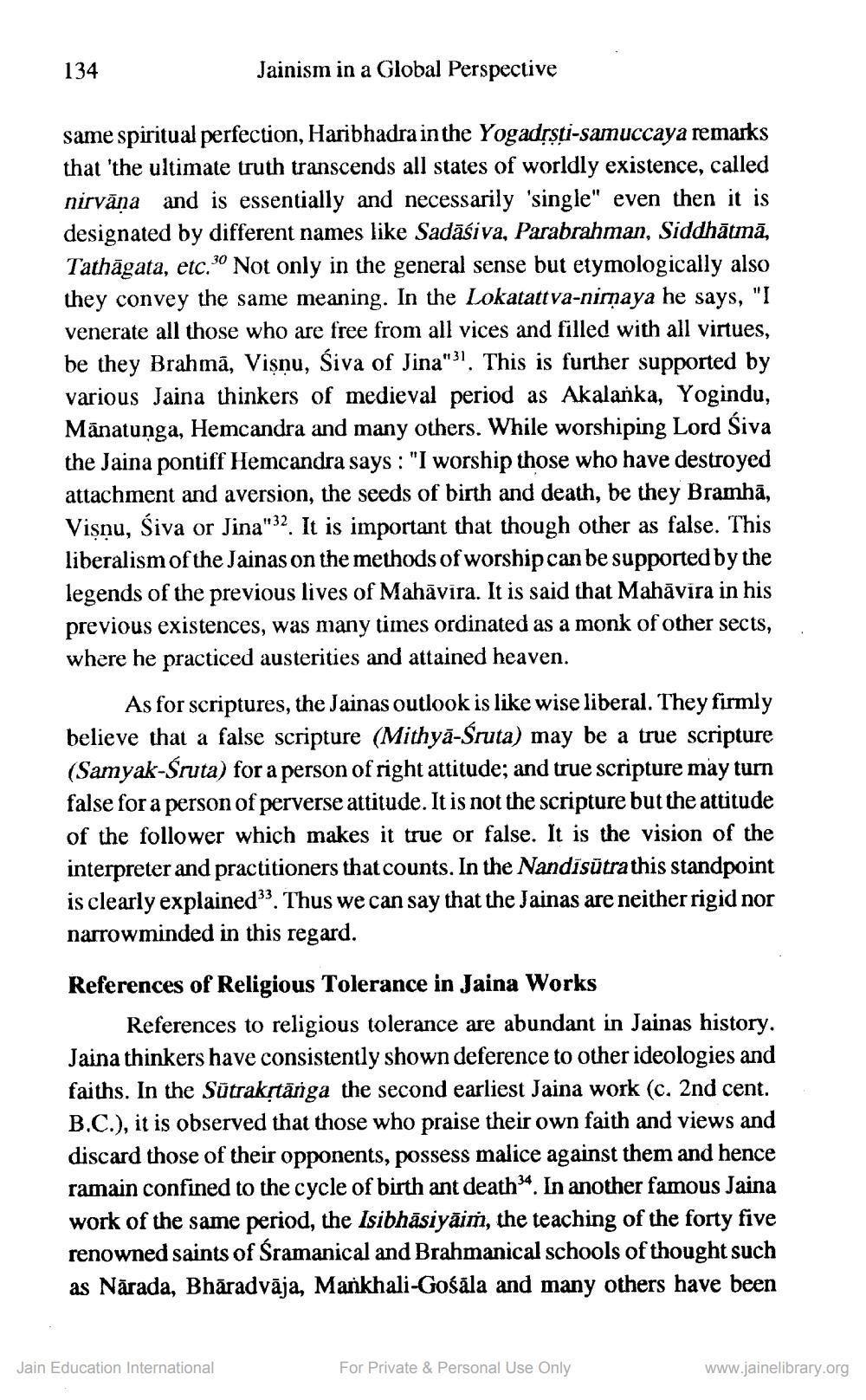________________
134
Jainism in a Global Perspective
same spiritual perfection, Haribhadra in the Yogadṛsti-samuccaya remarks that 'the ultimate truth transcends all states of worldly existence, called nirvāṇa and is essentially and necessarily 'single" even then it is designated by different names like Sadasiva, Parabrahman, Siddhātmā, Tathāgata, etc.30 Not only in the general sense but etymologically also they convey the same meaning. In the Lokatattva-nimṇaya he says, "I venerate all those who are free from all vices and filled with all virtues, be they Brahma, Viṣṇu, Śiva of Jina". This is further supported by various Jaina thinkers of medieval period as Akalanka, Yogindu, Manatunga, Hemcandra and many others. While worshiping Lord Siva the Jaina pontiff Hemcandra says: "I worship those who have destroyed attachment and aversion, the seeds of birth and death, be they Bramhā, Visnu, Śiva or Jina"32. It is important that though other as false. This liberalism of the Jainas on the methods of worship can be supported by the legends of the previous lives of Mahavira. It is said that Mahavira in his previous existences, was many times ordinated as a monk of other sects, where he practiced austerities and attained heaven.
As for scriptures, the Jainas outlook is like wise liberal. They firmly believe that a false scripture (Mithya-Śruta) may be a true scripture (Samyak-Śruta) for a person of right attitude; and true scripture may turn false for a person of perverse attitude. It is not the scripture but the attitude of the follower which makes it true or false. It is the vision of the interpreter and practitioners that counts. In the Nandisūtra this standpoint is clearly explained33. Thus we can say that the Jainas are neither rigid nor narrowminded in this regard.
References of Religious Tolerance in Jaina Works
References to religious tolerance are abundant in Jainas history. Jaina thinkers have consistently shown deference to other ideologies and faiths. In the Sütrakṛtänga the second earliest Jaina work (c. 2nd cent. B.C.), it is observed that those who praise their own faith and views and discard those of their opponents, possess malice against them and hence ramain confined to the cycle of birth ant death. In another famous Jaina work of the same period, the Isibhāsiyāim, the teaching of the forty five renowned saints of Śramanical and Brahmanical schools of thought such as Nārada, Bharadvāja, Mankhali-Gośāla and many others have been
Jain Education International
For Private & Personal Use Only
www.jainelibrary.org




